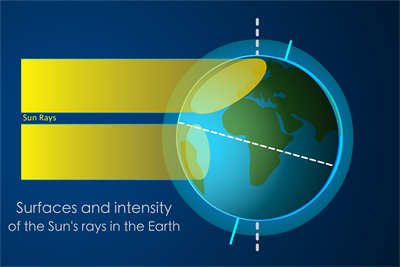PDF chapter test TRY NOW
Climate
Climate is the long-term pattern of weather in a particular region. A region's weather patterns, usually tracked for at least 30 years, is considered as its climate.
The elements associated with weather and climate are the same. Unlike the weather, climate does not change often.
The word "Climate" is derived from the Greek word "Klimo", which means "Inclination".
The word "Climate" is derived from the Greek word "Klimo", which means "Inclination".
Several parts of the world have different climates. Regions of tropical wet climate experience hot and rainy nearly every day. Whereas in the polar region, the climate is cold and snow-covered for most of the year. Between the freezing poles and the steamy tropics, many other climates contribute to Earth's biodiversity and geologic heritage.

Controlling factors of weather and climate
Major factors which affect the weather and climate of a region are
- Latitude (Angle of the sun’s rays and length of a day)
- Altitude (distribution of land)
- Proximity to the Ocean (water bodies)
- Mountains (location and direction)
- Vegetation
- Earth's tilt
- Air pressure
We know that the shape of the earth is spherical or geoid and also tilted on its axis. So, the fall of the sun's rays on the earth's surface is uneven. Sun rays received in the polar regions are inclined. Hence, there is little or no sunlight. Because of this, there are extreme cold winters.
The Equator receives vertical sun rays. Hence, the climate is very hot, with almost no winters. The difference in temperature creates ocean and air currents. Warm air rises and creates more space for air beneath, while cool air settles down.
The scientific study of weather is called Meteorology, and the scientific study of climate is called Climatology.
